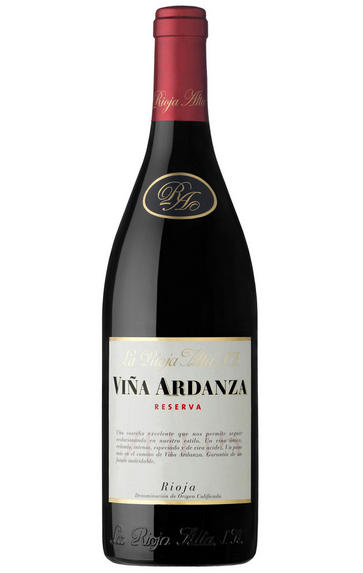
2012 Vina Ardanza, Reserva, La Rioja Alta, Rioja, Spain
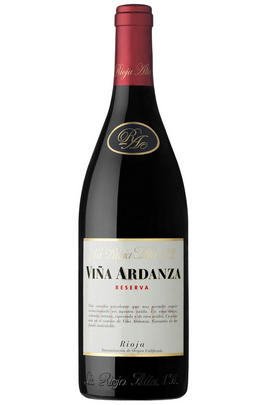
Critics reviews
Garnacha is an important component in the 2012 Viña Ardanza Reserva, where it represents 20% of the blend (the rest is, of course, Tempranillo). 2011 was a difficult vintage for Garnacha, so Viña Ardanza was not produced that year and they jumped from 2010, which had the mention "Selección Especial," to 2012, where it returns to the regular Reserva. The wine is a prototype of polished and aged Rioja with a ruby color with some orange and a developed nose with subtle aromas of decayed leaves, sweet spices and some cherries in liqueur even, quite complex and harmonious. The palate is velvety but rich, with resolved tannins and a fine chalky mouthfeel, sleek and elegant, terribly balanced. The flavors are pure and defined, and there is an overall sense of harmony that I like very much. Brilliant Ardanza! They produced no less than 600,000 bottles of this wine, which is remarkable. It has been in bottle since March 2016, so it's very approachable but should also age nicely in bottle. Drink or keep.
Luis Gutiérrez, The Wine Advocate, (October 2020)
Traditional and beautiful in character with plum, balsamic, orange-peel and leather aromas and flavors. It’s medium-to full-bodied with creamy texture and a long, intense aftertaste. Drink or hold.
James Suckling, JamesSuckling.com, (October 2020)
About this WINE
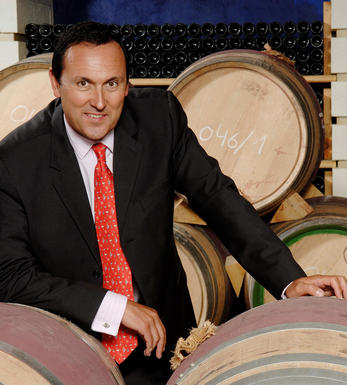
La Rioja Alta
La Rioja Alta continues to be one of the benchmarks for traditionally produced Rioja wine. Established in 1890 at the same spot where their head office sits today, their three Reserva Wine brands, Alberdi, Arana and Ardanza are named after the founding families, all three of which remain shareholders. The company still maintains traditional Rioja winemaking practices whilst embracing many of the new technological advances.
It is unusual for a great bodega of Rioja to own vineyards, but La Rioja Alta own 360ha from which they can source top-quality grapes, resulting in excellent fruit and richness throughout their wines. Tempranillo dominates the plantings, complemented with a small proportion of Garnacha and Graciano vines.
The company is renowned for the quality of its Reservas and in particular for its Gran Reservas, the 904 and the 890. The latter are produced only in exceptional years, are amongst the finest wines being produced in Rioja today.
Gran Reserva 890 is named, rather confusingly, after the date of the creation of La Rioja Alta (1890). It is the non-plus-ultra of the family, a wine that slumbers patiently for 6 years in oak, then is allowed to rest in bottle for a few more years before its released to the suspecting market-place.
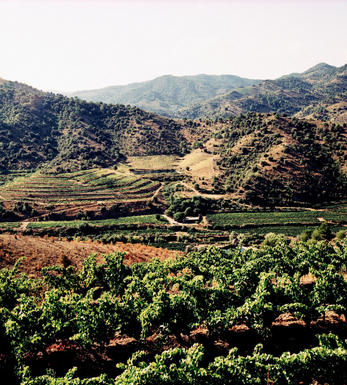
Rioja
Rioja is known primarily for its reds although it also makes white wines from the Viura and Malvasia grapes and rosés mainly from Garnacha. Most wineries (bodegas) have their own distinct red wine formula, but are normally a combination of Tempranillo, Garnacha and sometimes Graciano. Other red varieties recently approved into the Denominación de Origen Calificada (DOCa) regulations are the little-known Maturana Tinta, Maturana Parda, and Monastel (not to be confused with Monastrell). The most important of these by far is the king of native Spanish varieties, Tempranillo, which imbues the wines with complex and concentrated fruit flavours.
The Garnacha, meanwhile, bestows its wines with warm, ripe fruit and adds an alcohol punch. Graciano is an améliorateur grape (one that is added, often in small proportions, to add a little something to the final blend) and is found mainly in Reserva and Gran Reserva wines, albeit in small quantities (two to five percent), adding freshness and aroma, and enhancing the wines' ageing potential.
Crianza wines are aged for one year in oak followed by maturation for one year in bottle before being released for sale. Reservas must undergo a minimum of three years’ ageing before release, at least one of which should be in oak casks. Finally, Gran Reservas, which are only produced in the finest vintages, must spend at least five years maturing, of which at least two must be in oak.
Geographically, Rioja is divided in to three districts: Alavesa, Alta and Baja. Rioja Alavesa lies in the northwest of the La Rioja region in the Basque province of Álava. Along with Rioja Alta, it is the heartland of the Tempranillo grape. Rioja Alta, to the north-west and south of the Ebro River in the province of La Rioja, stretches as far as the city of Logroño. Elegance and poise is the hallmark of wines made here with Rioja Alta Tempranillo. Mazuelo (Carignan) is occasionally added to wines from this area to provide tannins and colour. Rioja Baja, located to the south-east, is the hottest of the three districts and specialises in Garnacha.
Rioja has witnessed a broad stylistic evolution over the years. The classic Riojas pioneered by Murrieta and Riscal in the 19thcentury were distinguished by long oak-barrel-ageing whereas the modern style, represented by Marqués de Cáceres since 1970, showcases the fruit and freshness of Tempranillo, keeping oak ageing to the legal minimum. The post-modern school that emerged in the late 1990s from producers like Palacios Remondo and Finca Allende concentrate on making wines from old vines or specific vineyard plots to accentuate the terroir, and using larger proportions of minority varietals such as Graciano.
The alta expression wines, pioneered by Finca Allende (among others) and later taken up by almost every other producer in Rioja, represent the newest flagship category in Rioja. Alongside the traditional Gran Reservas, alta expression wines are limited production and come from low-yielding vines, often from a single vineyard, and are hand-picked. Excellent examples of this style are Artadi's Pagos Viejos and El Pison.
However, modernisation has not held back the continuation of successful traditional styles as well. Happily long-established houses such La Rioja Alta, CVNE and Marques de Vargas continue to make graceful, old style wines better than ever before.
White Rioja is typically produced by the Viura grape which must comprise at least 51 percent of the blend; the rest can be made up by other, recently-authorised varieties, namely Sauvignon Blanc, Chardonnay and Verdejo, as well as the native Maturana Blanca, Tempranillo Blanco, and Turruntés (not to be mistaken for Torrontés).
Recommended Producers:
Finca Allende, Amezola de la Mora, Artadi, CVNE, Marqués de Vargas, Palacios Remondo, La Rioja Alta, Murrieta.
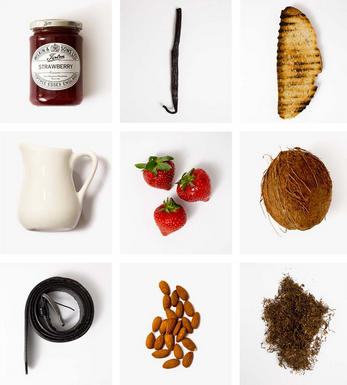
Tempranillo/Tinto Fino
A high quality red wine grape that is grown all over Spain except in the hot South - it is known as Tinto Fino in Ribera del Duero, Cencibel in La Mancha and Valdepenas and Ull de Llebre in Catalonia. Its spiritual home is in Rioja and Navarra where it constitutes around 70% of most red blends.
Tempranillo-based wines tend to have a spicy, herbal, tobacco-like character accompanied by ripe strawberry and red cherry fruits. It produces fresh, vibrantly fruit driven "jovenes" meant for drinking young. However Tempranillo really comes into its own when oak aged, as with the top Riojas where its flavours seem to harmonise perfectly with both French and American oak, producing rich, powerful and concentrated wines which can be extraordinarily long-lived.
In Ribera del Duero it generally sees less oak - the exception being Vega Sicilia where it is blended with Cabernet Sauvignon and Merlot and then aged for an astonishing 7 years in oak and is unquestionably one of the world`s greatest wines.


Buying options
Add to wishlist
Description
Pure, deep ruby colour with a slight sunset orange hue towards the rim. Aromas of ripe strawberry, delicate sweet spice and leather fill the glass. The oak aging becomes more apparent on the palate, the soft vanilla spice is paired with just the correct amount of twang to balance. It’s silky but rich, with gentle tannins and a lovely elegance to it. I was pretty impressed by the 2012, it’s incredibly approachable now, the last vintage to be released until 2023. Stash a case away in your cellar, I certainly will be. Drink 2020-2028
Joshua Friend, Private Account Manager (November 2020)
You can’t help but enjoy 2012 Viña Ardanza. From the off, the nose is full of well-defined fruit: red cherries, redcurrants, raspberries and blackberries. Fruit first and then, vanilla, sweet spice and tobacco roll out, marrying perfectly in the glass. These oak-derived flavours that come from maturation really add an extra layer to this wine. It isn’t too oaky, it’s just right! The body is medium with low level, fine grained tannins, meaning that this can be drunk with almost anything. It’s not overly complicated, rather, 2012 Viña Ardanza is joyous and infectious. One again, La Rioja Alta have made a cracking wine. Drink 2020 - 2030
Tatiana Humphreys, Private Account Manager (November 2020)
wine at a glance
Delivery and quality guarantee